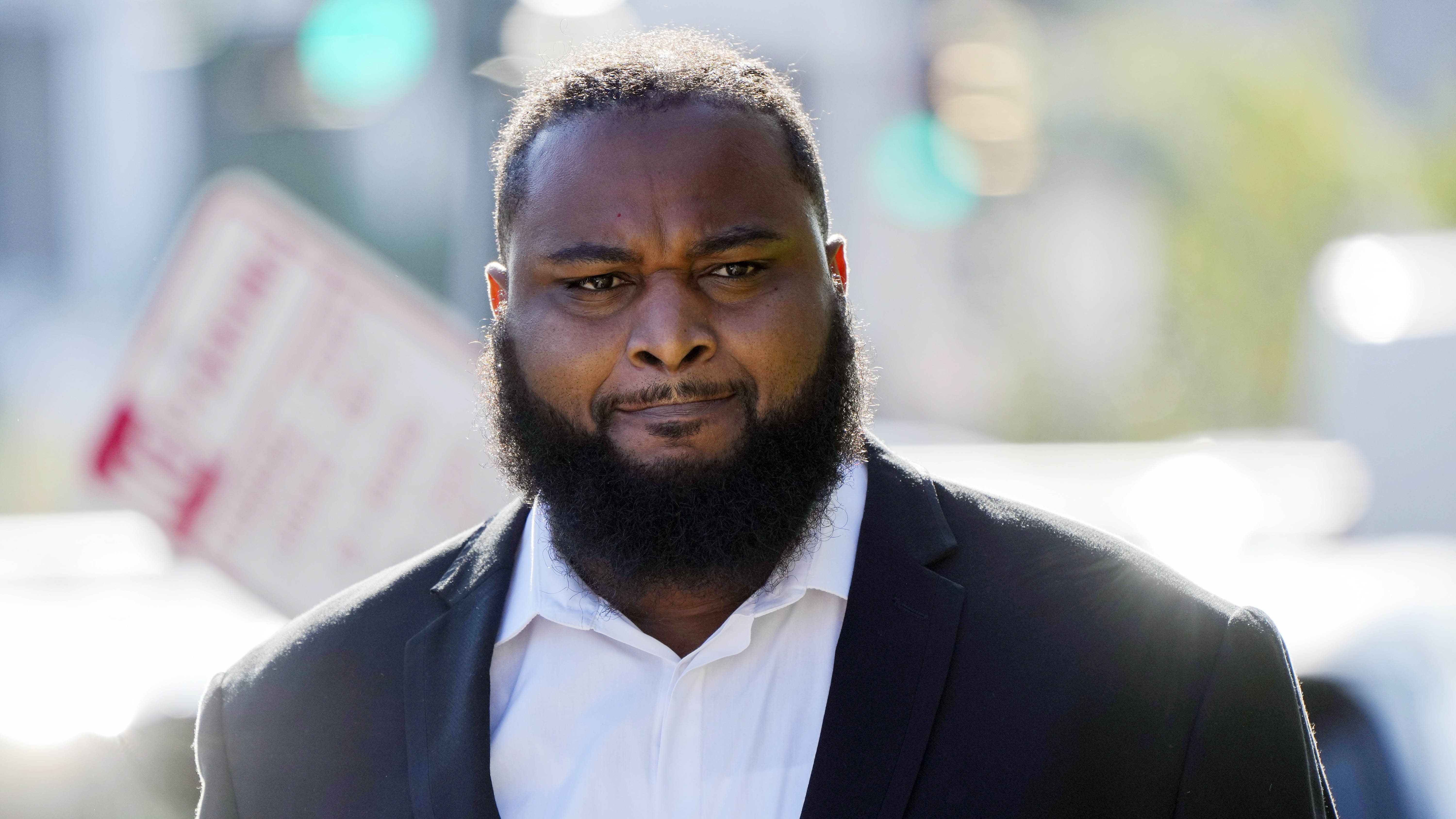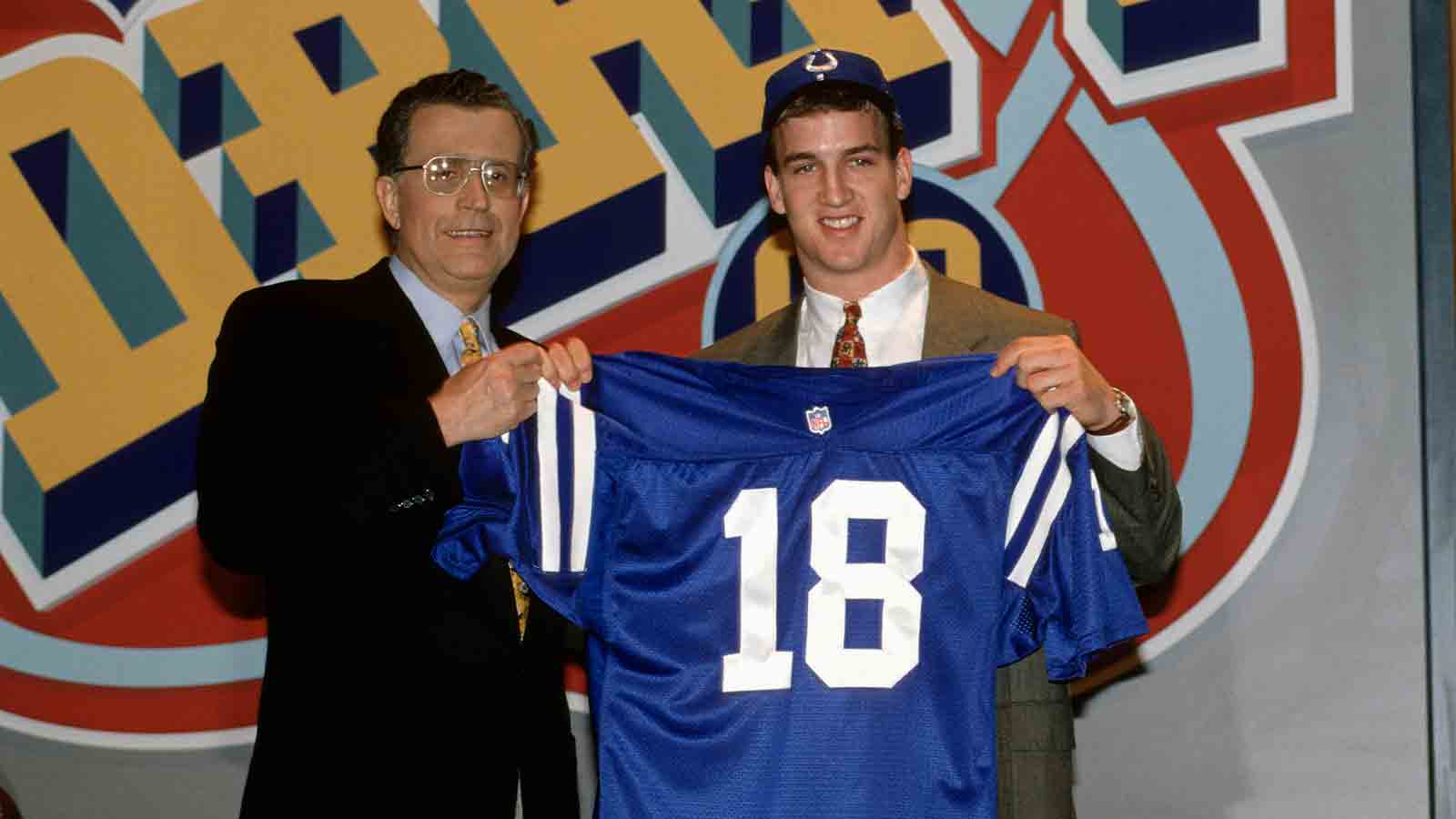For those of you who feel confused by the Brady retirement saga, allow me to recap.
At the end of January, ESPN reported that Brady intended to retire after 22 seasons in the NFL. That was quickly followed with a number of people, Brady included, refuting those claims before the 44-year-old officially confirmed the news himself. However, not everyone was sold on that, and Brady just proved them right when he announced his return to the Bucs after just 40 days in retirement.
This move, while surprising, isn’t unheard of. Many of the biggest sports GOATs have shown they might not be cut out for retirement, or at least not for a little while down the road.
Stay in the game with the latest updates on your beloved Boston sports teams! Sign up here for our All Access Daily newsletter.
Here are some other notable examples of athletes who retired only to return to competition:
Magic Johnson
In 1991, Magic Johnson shocked the world when he shared his HIV diagnosis in what eventually became known as “The Announcement.” This was groundbreaking for two reasons: Johnson came to embody a virus that had ravaged often forgotten communities throughout the ’80s, and it effectively ended the career of the 12-time NBA All-Star, largely due to public perception of the incorrect risk Johnson posed to infecting other players.
What some may not remember, though, is that Johnson’s story didn’t end there. He actually returned to competition, winning an Olympic gold medal with the Dream Team and even playing 32 games with the Lakers during the 1995-96 season.
NFL
Michael Phelps
Phelps’ 2008 Olympic performance was nothing short of historic -- a perfect 8-8 gold medal sweep, breaking Mark Spitz’s record for most first-place finishes in a single Olympics. He returned four years later with a similarly dominant performance, picking up four golds and two silvers, before announcing his retirement at 27.
Despite the impressive sendoff, retirement didn’t stick for Phelps -- who notably said he “hates winning more than he hates losing.” Less than two years after the London Olympics, Phelps was back competing in search of his fifth Olympic nod.
His return wasn’t without its bumps. A second DUI landed him in hot water with USA Swimming, who ultimately dropped him from the national team a year before the Rio Games. He eventually worked his way back into the good graces of USA Swimming and earned a spot on the Olympic roster where he improved on his London haul, finishing the Rio Games with six medals -- five golds, one silver -- and an Olympic record.
Phelps joined Dara Torres as only the second American swimmer to qualify for five Olympics.
Marshawn Lynch
Many of Marshawn Lynch’s biggest moments came with the Seattle Seahawks, but it was actually his hometown team, the Oakland Raiders, who pulled him out of retirement after just one season on the sidelines.
Lynch, an Oakland native, stayed in the Bay Area throughout college playing with the Cal Bears. He had won a Super Bowl with Seattle in 2013 before retiring in 2015. However, when word got out in 2017 that the Raiders were heading to Las Vegas, Lynch worked out a deal with the Seahawks, who still retained his rights, to trade him to the Raiders.
While he struggled with injuries and earned a reputation for obscene celebrations, he still posted solid numbers in two seasons with the Raiders.
In a poetic end, Lynch spent his final season with the Seahawks in 2019-20. Seattle made it to the Divisional Round where Lynch rushed for two touchdowns in a loss to the Green Bay Packers. As recently as December of 2020, the then-34 year old said he’d entertain offers to return to the league from Super Bowl contenders.
Rob Gronkowski
Gronk and Brady are among the great sports duos throughout history, so it’s not surprising to see the quarterback take a page out of his favorite tight end’s book. Their bond is so deep that Brady is often credited for personally drawing Gronkowski out of retirement in 2019 and convincing him to reunite in Tampa Bay.
Gronkowski, known for his exuberant celebrations and goofy personality, shocked fans in 2019 when he retired after nine seasons in the league, citing the toll injuries had taken on his mental health. After a year away from the locker room, Gronkowski reunited with Brady under Bruce Arians and the Bucs.
There was considerable speculation throughout Brady’s 40-day retirement that Gronkowski would follow suit. However, this return leaves many to believe the tight end won’t be hanging up his pads anytime soon.
Michael Jordan
Jordan retired from professional sports not once, not twice, but three times -- and that doesn't even take into account his abrupt switch back to basketball from baseball in the middle of the 1994-95 season.
Jordan started with the Bulls in 1984 and built a competitive team over the next six years but was consistently thwarted by the Celtics and Pistons. It wasn’t until 1991 that Jordan made his first NBA Finals, winning three straight championships for Chicago. Just over a month after winning his third straight NBA title, Jordan’s father, James, was murdered at a rest stop in North Carolina. The elder Jordan’s death is believed to have played a major role in his son’s decision to leave basketball three months later, rather opting to focus on baseball.
He bounced around the minor leagues for a year and a half, even playing for the White Sox, who were owned by Bulls owner Jerry Reinsdorf. In March of 1995, the Bulls were 31-31 and struggling to secure a playoff spot. Enter Jordan, who helped lead the Bulls to the Eastern Conference semifinals. He eventually earned three more rings from 1996-1998 before announcing his second retirement. The next two years were spent dabbling in management as a part-owner of the Washington Wizards before making his third return to the league, joining the Wizards from 2001-2003.
Mario Lemieux
Mario Lemieux was every bit the superhero as his nickname Super Mario implied. The Canadian is splashed across the record books, owning the second-most goals-per-game average (.754), assist-per-game average (1.129) and point-per-game average in NHL history (1.883). Even more remarkably, he did all this while battling numerous health conditions that forced him to take a leave of absence and even retire before eventually returning to the ice.
Throughout the ’90s, Lemieux underwent two back surgeries and aggressive radiation to treat Hodgkin’s Lymphoma, all while continuing to play. In 1997, he retired at 32. The Pittsburgh legend continued to contribute to the Penguins by playing an active role in restructuring their failing business model, namely surrounding the debts the team owned on his contract and establishing himself as the majority owner in the team.
In 2000, Lemieux returned to the ice for a five-season stretch, making one playoff appearance. Lemieux has maintained ownership over the Penguins to this day.
Brett Favre
Brett Favre’s final three seasons were basically spent jumping on and off the retirement train.
His first retirement from the Green Bay Packers in 2008, however, was definitely the most memorable. Speculation of Favre’s retirement began as early as 2002, but it hit an all-time high around 2007 when rumors emerged that the Packers organization was ready to move on with unproven, but talented Aaron Rodgers at the helm.
He formally retired in March 2008 but by July was reportedly reaching out to the Packers about a return, an offer that was not well received as Green Bay made it clear they had no intention of playing him but also refusing his request for an unconditional release that would allow him to seek opportunities with other teams. Favre and the Packers eventually came to an agreement to part ways but the damage had been done.
Favre’s jersey was eventually retired at Lambeau in 2015, seven years after the originally scheduled date.
Dara Torres
Not only did Dara Torres become the first American swimmer to compete in five Olympics, but she did so over a 22-year stretch, making her the oldest U.S. Olympic swimmer when she competed in Beijing at 41.
Torres represented the U.S. at the Olympic Games from 1984-1992, winning four medals along the way -- two golds, a silver and a bronze. She then took seven years off from competing before jumping back into the water ahead of the 2000 Olympics. In Sydney, Torres added another five medals -- two gold and three bronze, her first ever medals in individual events.
She took another seven-year hiatus during which she had her first child before making one last Olympic appearance in Beijing where she won three silver medals to bring her grand total to 12.
Jens Lehmann
Lehmann’s first stint at Arsenal was a mixed bag.
On one hand, he was such a prolific goal-stopper, leading the Gunners to the only undefeated season in Premier League history. However, his performance at the 2006 UEFA Champions League Final earned him the title of first ever player and only goalkeeper to be dismissed in a Champions League Final. Lehmann took down PSG’s Samuel Eto’o in the 18th minute, resulting in a red card and an eventual 2-1 loss for the undermanned Arsenal team. He retired in 2008.
The German, however, did return to Arsenal in their time of need. When the Gunners found themselves with three injured goalkeepers, Lehmann stepped up to the net at 41 years old.


